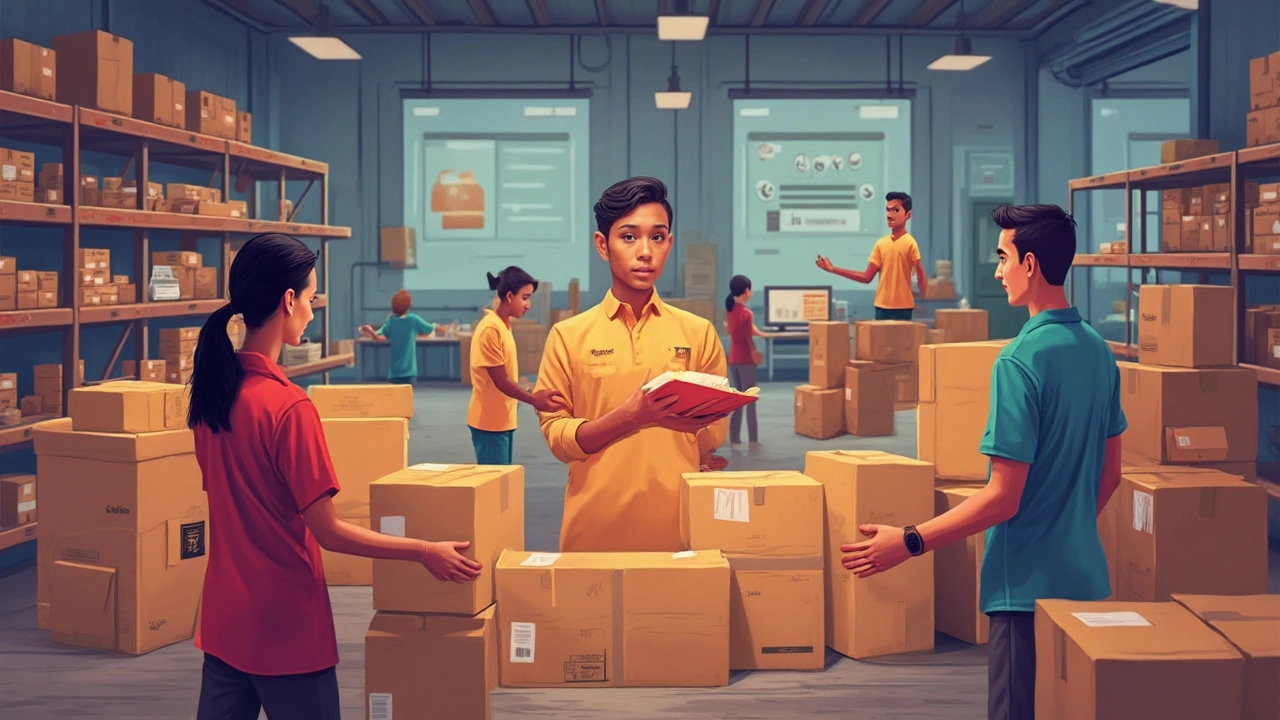Ecommerce Logistics: How to Ship Online Orders Fast and Cheap
If you run an online store, getting products from your shelf to a customer’s door is the heart of your business. Good ecommerce logistics means happy buyers, repeat sales, and more profit. Below you’ll find the basics you need to master and a few quick tricks to make your shipping smoother.
Key Elements of Ecommerce Logistics
First, think of the supply chain as four simple steps: sourcing, warehousing, transportation, and last‑mile delivery. Sourcing is where you buy or make the products. Warehousing isn’t just a storage room; it’s where you organize SKUs, pack orders, and keep inventory accurate. Transportation covers the move from warehouse to a regional hub or directly to the customer. Finally, last‑mile delivery is the actual hand‑off at a doorstep.
Each step has its own cost drivers. For example, a poorly arranged warehouse can add minutes to every pick, which adds up to hours each day. Likewise, choosing a carrier based only on price can lead to delayed shipments and angry customers. The sweet spot is balancing cost with speed and reliability.
Technology plays a huge role. Simple tools like barcode scanners and inventory management software keep stock counts real‑time, reducing stock‑outs. More advanced platforms sync orders from multiple sales channels (Shopify, Amazon, etc.) into one dashboard, so you never miss a pack‑and‑ship cue.
How to Boost Your Online Shipping Efficiency
Start with data. Look at your order volume, average order weight, and shipping destinations. If most orders go to the same city, consider a micro‑fulfilment centre nearby. This cuts transit time and often reduces carrier rates.
Second, standardize packaging. Using a few box sizes that fit most products means you can pre‑measure and pre‑pay carrier rates, avoiding surprise surcharges. It also speeds up the packing line because workers know exactly which box to grab.
Third, negotiate with carriers. Most small businesses accept the list price, but if you can show a steady shipping volume, carriers will give you a discount. Even a 5% rate cut can turn into a big margin boost over time.
Fourth, offer multiple shipping options at checkout. Some shoppers want the cheapest rate and are willing to wait; others need same‑day delivery. By displaying both, you increase conversion and let customers self‑select the cost‑speed balance they prefer.
Finally, keep customers informed. Automatic tracking emails, real‑time status updates, and clear return policies reduce support tickets. When buyers know exactly where their package is, they’re less likely to call you with questions.
Putting these pieces together creates a logistics system that feels effortless. You’ll see fewer delays, lower shipping costs, and higher customer satisfaction—all without hiring a big team.
Ready to upgrade your ecommerce logistics? Start with one change today—whether it’s organizing your warehouse, tweaking your packaging, or adding a tracking email. Small improvements add up, and before you know it, your shipping will become a competitive advantage rather than a headache.











